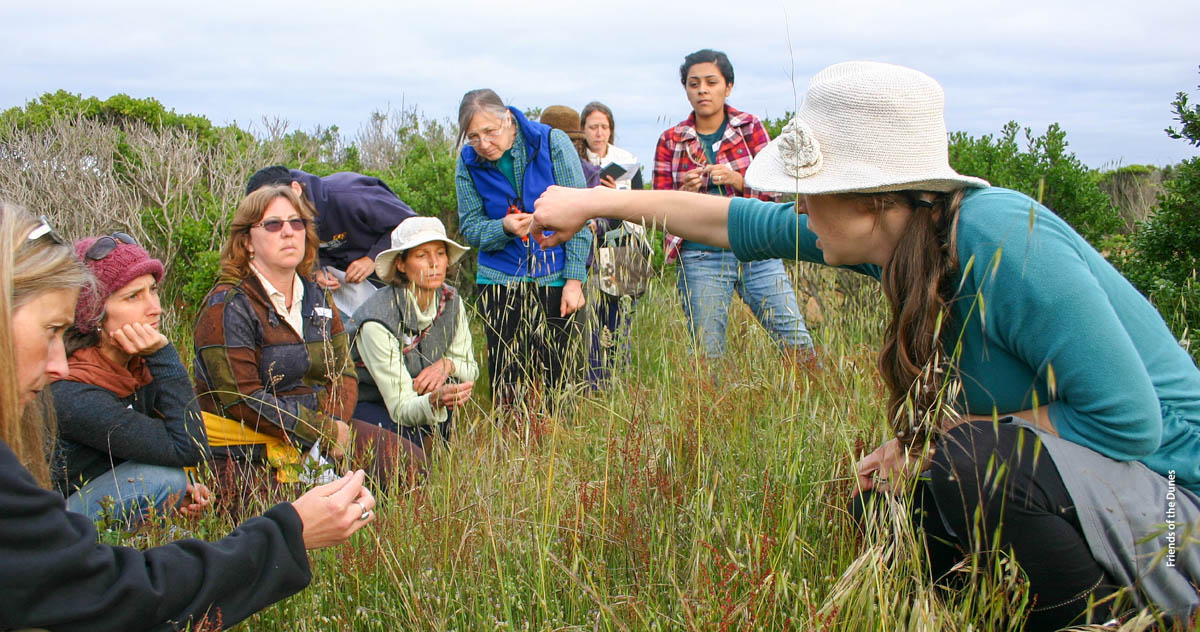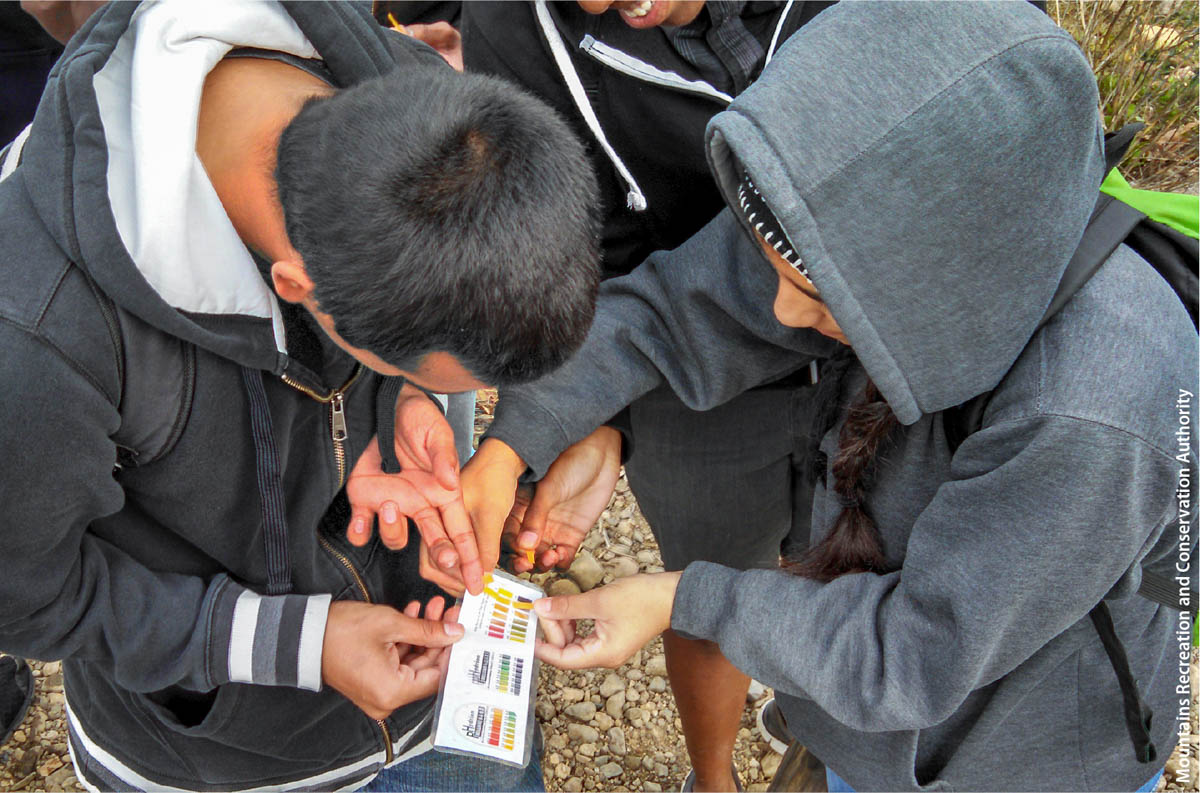All Issues
Special issue: Community and citizen science
Publication Information
California Agriculture 75(1):5-7. https://doi.org/10.3733/ca.2021a0003
Published online March 10, 2021
PDF | Citation | Permissions
NALT Keywords
Summary
In this special issue, California Agriculture presents research and news on community and citizen science projects across California.
Full text
In this special issue of California Agriculture, we explore diverse examples of science at UC Agriculture and Natural Resources (UC ANR) that have involved participation by people not typically expected to play a role in the research process. They might be school-age youth, clientele of UC ANR advisors, volunteers in programs such as the UC Master Gardener Program or the UC California Naturalist Program, or simply interested or concerned members of the public. We refer to this idea of scientific research conducted, in whole or in part, by amateur or nonprofessional scientists as community and citizen science (CCS). There are many other terms for it (see Eitzel et al. 2017) — such as public participation in scientific research, volunteer monitoring, crowd-sourced science, or participatory action research — emanating from various natural and social science disciplines. CCS projects can take many forms, as demonstrated by the many examples throughout this special issue. They can advance scientific research and monitoring in a variety of ways, build trust among the collaborators and create opportunities for outreach, education, stewardship and mutual understanding.
The traditions of Cooperative Extension overlap significantly with CCS. Cooperative Extension was founded with a mission to “to aid in diffusing among the people of the United States useful and practical information on subjects relating to agriculture and home economics, and to encourage the application of the same” (Conglose 2000). But translating information into a particular context often requires collaboration and a two-way flow of knowledge (Cash 2001). From the very beginning, expertise held by farmers and others in the agricultural system has played an important (if not always explicitly recognized) role in Cooperative Extension research and engagement. In the years since its founding, Cooperative Extension has grown to encompass a much wider variety of stakeholders and communities, accompanied by many new ways of working together through “learning partnerships” (Conglose 2000). This diversity of collaborative forms in Cooperative Extension mirrors what we see in the broader field of CCS, and each can enrich the other.
Participants in the Friends of the Dunes California Naturalist certification course learn about dune ecosystem stewardship in Humboldt County. Researchers have found that community and citizen science projects can improve research outcomes and benefit participants through deepened learning.
While the idea is not new (Miller-Rushing et al. 2012), in recent years CCS has become increasingly recognized as a valid scientific methodology, pedagogical strategy and capacity-building approach. The field is evolving as both a subject of research and an area of scientific practice (Tauginienė et al. 2020). It was called out as an interagency priority in recent Congressional legislation (American Innovation and Competitiveness Act 2017), and there is now a federal interagency community of practice. Scholarly publications focused on CCS have increased significantly in recent years with many journals dedicating special issues to the topic, and a new journal for the field — Citizen Science: Theory and Practice — recently established. Several new professional associations have been formed, including the Citizen Science Association, which attracts hundreds of scholars and practitioners to its biannual meetings. Many other professional associations — such as the American Geophysical Union, Ecological Society of America, Society for Conservation Biology and the American Association for the Advancement of Science — have begun to focus on CCS in their publications and conferences.
The burgeoning enthusiasm for CCS stems in part from the many different goals and benefits that it can advance. With CCS approaches, public engagement and collaboration are not secondary concerns; they are central to the research. When scientists work with volunteers in collecting data or crowdsourcing data analysis, for example, they are producing scientific knowledge in a traditional sense, while learning from and responding to one another in the collaborative process. A scientist co-creating a project in response to a set of community priorities and questions may still publish novel findings, while at the same time building a research agenda that is responsive to real, urgent, societal needs, and inclusive of the community that motivates that agenda. Researchers are finding that CCS can genuinely improve research outcomes (Cooper et al. 2014; McKinley et al. 2015; Merenlender et al. 2016; Parrish et al. 2018; Theobald et al. 2015), while benefiting individual participants through deepened learning (Ballard et al. 2018; Bonney et al. 2009; NASEM 2018; Phillips et al. 2019), and leading to progress on community and environmental issues (Aceves-Bueno et al. 2015; Dosemagen and Gehrke 2017; McKinley et al. 2015).
The CCS projects described in the research papers for this special issue represent a similar range of motivations and outcomes.
Grosholz et al. (this issue, page 40) describe an ongoing project that tightly integrates invasive species science and environmental restoration work and shows how CCS can support environmental education and community-level capacity building through the research process. Volunteers from the local community have played many different roles in this project, from data collection to communication and ongoing management of the restoration program in Seadrift Lagoon in Northern California.
CCS can also serve as a framework for youth education, while linking directly with action at the community level. Smith et al. (page 33) describe a youth participatory action research (YPAR) project, based in the California 4-H Youth Development Program, in which youth designed and led research and risk assessment focused on zoonotic diseases. They used the results of their scientific work to advocate for changes, in some cases leading directly to improvements in biosecurity at county fairs.
Sometimes traditional collaborative activities at UC ANR are enriched and expanded through the introduction of CCS approaches. Bird et al. (page 14) describe their early experiences with participatory evaluation, in which the insights from program evaluation are enriched through collaboration with volunteers.
While CCS is often community-based or highly localized, other cases illustrate how it can be employed to conduct research at broader spatial and temporal scales. The CALeDNA project (Meyer et al., page 20), for example, has garnered contributions from people throughout California. In this example of crowd-sourced data collection, project leaders are also engaging volunteers in dialogue about how to deploy eDNA methods, thus bringing a wider set of perspectives to bear on debates over a new and potentially very powerful form of scientific monitoring.
The contributions from these authors and the other brief examples highlighted in the following pages (Crowder, 9–13) point to a perhaps-unsurprising fact: UC ANR is home to a rich and diverse array of CCS projects and programs, which engage many different audiences in many kinds of activities. The examples show teams leveraging approaches from CCS, such as app-based crowd-sourcing and YPAR. The many different structures can engage many different kinds of audiences across California.
California Naturalists in-training learn how to monitor water quality in the Los Angeles River Recreation Zone. Community and citizen science projects can take many forms, from app-based crowd-sourcing projects to community-led monitoring, or co-created projects with private landowners.
CCS can also help with a variety of problems that pervade our mosaic of public and private lands in California. Helping to build a broader understanding of the conservation of flora and fauna on private lands is one example. In urban areas, small private lots are generally inaccessible to researchers. Inviting residents to collect and share data has revolutionized the study of urban biodiversity (Li et al. 2019). In rural areas, large private property owners have long collaborated with Cooperative Extension researchers, but the opportunity for landowners to engage directly in data collection can enrich the relationship. The UC Statewide Integrated Pest Management Program has recruited citizens to monitor the distribution of and damage from invasive species that do not recognize property lines. Invasive shothole borer monitoring is a valuable example of work in urban areas (Crowder, page 12).
UC ANR provides a uniquely rich context for conducting research using CCS approaches. Because UC ANR is present in every county in the state, from urban centers to rural communities, it is well-positioned to engage Californians in science. UC ANR programs build human capital that can expand what's possible in CCS. The large corps of trained and dedicated volunteers — in the UC Master Gardener, UC California Naturalist, and California 4-H Youth Development programs in particular — is a ready crew of community members primed to engage in the work of CCS. When urgent data needs emerge, for example in response to pollution concerns related to wildfires (Crowder, page 11), networks of trained UC ANR volunteers have been an invaluable resource. We explore this reciprocal dynamic — CCS approaches as a boon to UC ANR, and UC ANR as a rich context for CCS — to greater depth in a report prepared for UC ANR leadership (Meyer and Drill 2019), and summarized in our article on page 8 of this issue.
We close this introduction with a final note about terminology. We have chosen the broad umbrella term of community and citizen science both here and in the aforementioned report, while recognizing that different forms of CCS stem from a variety of different traditions (Ottinger 2017), and every term has strengths and flaws (Eitzel et al. 2017). For example, some find the word “citizen” problematic for potentially implying that only legal citizens can contribute to science (e.g., Angulo 2020). Others draw clear boundaries around “community science” as an approach driven by community knowledge and priorities, as opposed to the interests of scientists (e.g., Pandya 2019). Rather than dictate a single term, in our editorial process we have encouraged authors in this special issue to use the term that works for them and their collaborators, while being very clear about the reasoning behind that choice.
We hope that you will see in this special issue the many ways that CCS is advancing UC ANR's mission of “serving California through the creation, development and application of knowledge in agricultural, natural and human resources.” Collaboration with communities through CCS gives us the potential to co-create useful knowledge, support communities with the power to successfully apply it, and build capacity for stewarding our state's resources.






